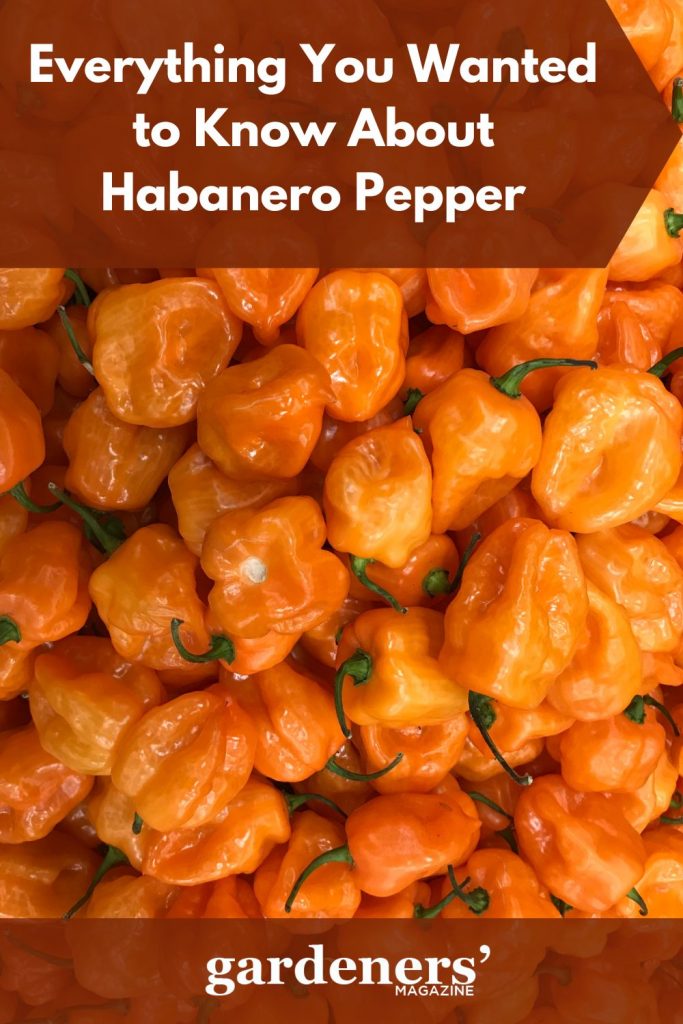Habanero peppers are one of the hottest peppers in the world. They have been a part of culinary culture since ancient times and are an important ingredient in many dishes. These hot peppers can be found growing in Mexico, Central America, South America, and the Caribbean Islands. Habanero peppers are very versatile and offer a unique flavor profile that is unlike any other pepper.
In this article, we will explore everything you need to know about habanero peppers – from their history and origin, to the health benefits they offer, as well as cultivation and harvesting of these fiery fruits.
History and Origin of Habanero Pepper
Habanero peppers were first discovered in South America by the Spanish colonists in the sixteenth century. They quickly spread throughout the world as explorers discovered new lands in Central and North America. Today, habanero peppers are grown in many countries around the world including Mexico, Belize, Guatemala, Honduras, Nicaragua, Costa Rica and the United States.

Description of Habanero Pepper
Habanero peppers are small but pack a punch of heat! They range from 1–2 inches in length and can weigh up to 10 grams. The peppers come in a variety of colors such as red, orange, yellow, brown, white and even purple. The skin is thin but tough and the flesh is juicy with a smoky flavor that can range from mildly spicy to downright fiery!
Flavor Profile of Habanero Pepper
The flavor profile of habanero peppers is unique and intense. The heat of the pepper can be described as an instant “tongue tingling” sensation followed by a subtle smokiness that lingers on the tongue. The flavor also has notes of tropical fruit, floral and citrus with undertones of nutmeg and cumin.
Health Benefits of Habanero Pepper
Habanero peppers are rich in vitamins, minerals and antioxidants. They are an excellent vitamin C source, which helps boost immunity and aid in wound healing. Habanero peppers also contain potassium, calcium, iron and magnesium. The capsaicin found in habanero peppers has anti-inflammatory properties.
Seasonality and Availability Throughout the Year of Habanero Pepper
Habanero peppers are widely available all year round in grocery stores and markets. However, peak season for fresh habanero peppers is during summer months from June to August. During this time, the peppers are grown in abundance and can be found at their freshest and most flavorful!
Cultivation of the Habanero Pepper
Habanero peppers are grown in many countries around the world, including Mexico, Nicaragua, Costa Rica and the United States. The plants need to be grown in hot climates with plenty of sunlight and well-drained soil. To ensure a bountiful harvest, farmers need to adhere to good agricultural practices such as crop rotation and the use of organic fertilizers.
Harvesting of the Habanero Pepper
Habanero peppers are typically harvested when they are fully ripe, which is usually around 90 days after planting. The peppers will be bright yellow or orange in color and should feel firm to the touch. For optimal flavor, farmers must harvest the peppers before they become overly ripe as this can affect the flavor of the pepper.
Where Do They Grow? Region-wise
Habanero peppers are grown in many countries around the world, including Mexico, Nicaragua, Costa Rica and the United States. They thrive best in hot climates with plenty of sunlight and well-drained soil. The peppers can also be cultivated indoors under artificial light for year-round production.
What are the Things to Remember when Buying of Habanero Pepper?
When buying habanero peppers, it is important to look for fresh peppers that are firm and brightly colored. Avoid any peppers that have spots or dark patches as these can indicate they are overripe. Additionally, check the label carefully for any signs of pesticide residue before purchasing.
How to Store of Habanero Pepper?
To keep habanero peppers fresh, they should be stored in a cool, dark place away from direct sunlight. For optimal shelf life, the peppers can also be wrapped in paper towel or placed in a sealed container and refrigerated for up to two weeks.
How do you use them with other fruits and vegetables?
Habanero peppers can be used to add a spicy kick to many dishes. They pair especially well with other tropical fruits and vegetables such as pineapple, mango, bell peppers, tomatoes, and onions. They can also be blended into sauces or salsas for an extra burst of flavor.
Conclusion
Habanero peppers are an excellent addition to many dishes and offer plenty of health benefits. They are easy to grow in hot climates, and with careful storage, can last for up to two weeks in the refrigerator. When using them in recipes, it is important to remember that they are very spicy and should be used sparingly. With a few simple tips, you can enjoy habanero peppers all year round.
Habanero peppers can also be used to make a variety of hot sauces and salsas that will add a touch of heat to any meal. They are an excellent way to spice up burgers, tacos, salads, and more! Experiment with different combinations and amounts to find the perfect flavor for your dish. With the right ingredients, you can make an amazing dish that will tantalize your taste buds!
- Everything You Wanted to Know About Red Tamarillos - June 2, 2025
- A Guide to Tulips: Everything You Need to Know & More… - June 2, 2025
- Guanabana: Description, Flavor, Benefits, And Uses - May 27, 2025

4 thoughts on “Everything You Wanted To Know About Habanero Pepper”
Comments are closed.